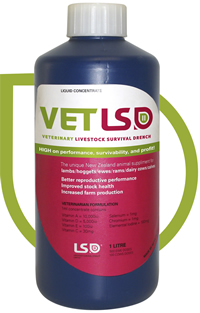Brassicas – nutritional facts you may not know
Forage brassicas have become New Zealand’s most widely cultivated crop.
Every year farmers and contractors plant up to 250,000 ha of brassicas to supplement sheep, beef and dairy cows through periods of feed deficit.
Chances are you have some of those 250,000 ha on your farm.
And why not? Annual forage/fodder brassica crops can have high nutritive values.
Well managed and correctly grazed, they produce high yields, and are typically very digestible, with good ME levels (12-13 MJME/kg DM) and relatively high protein content.
One thing they are not, however, is full of vitamins. They are low in Vitamin E and Vitamin D.
Nor do they usually provide optimal mineral nutrients for the animals grazing them, especially when it comes to Iodine.
Brassica crops contain certain substances called goitrogens which effectively cause Iodine deficiency in the animals grazing them.
So, in one sense the more we feed forage brassicas, the less we supply a small number of essential dietary nutrients to our stock.
Vitamin E deficiency in the presence of adequate selenium is increasingly believed to be implicated in sub-clinical white muscle disease (WMD), causingheart failure in new-born lambs, classical WMD (especially in hoggets) and also ill-thrift, infertility and impaired immunity.
There are many references in NZ literature (Surveillance) of Vitamin E-induced poor performance and WMD of stock, especially South Island hoggets in the winter, grazing swedes or turnips.
More recently it’s been reported that some hoggets grazing Pasja or rape and even in vineyards in the summer/autumn period have very high blood levels of muscle enzymes (CK) associated with very low Vitamin E levels. Selenium levels are usually normal.
These animals show a reluctance to walk or go down in the yards or paddocks after a cold snap, or during handling or transport after a stress period,
Vitamin D deficiency meantime results in unthrifty stock, susceptibility to parasitism, a dull fleece, and stiff or lame animals with reduced appetite.
Iodine deficiency is associated with reduced lamb survival as a result of low metabolic rate, impaired sucking behaviour and an inability to control heat loss.
Forage brassica crops with high nitrate levels are well-known to cause nitrate poisoning. But those same nitrates can also interfere with an animal’s ability to utilise Vitamin A and on top of this they also increase the requirement for Vitamin E.
Vitamin A deficiency leads to lambs with poor growth rates and increased susceptibility to scours and pneumonia. It is also associated with reduced lambing performance.
No one is suggesting we do away with our brassica feed crops.
But veterinary research increasingly indicates it may be well worth balancing brassica intake with vitamin supplementation.
Veterinary LSD is a special formulation of Vitamin E, A, D and C, plus selenium, iodine and chromium. It has been specially developed to help counter vitamin deficiency in New Zealand livestock.
If you’re feeding brassica crops this season, give the clinic a call to find out more about using Veterinary LSD® to improve stock health and performance.
